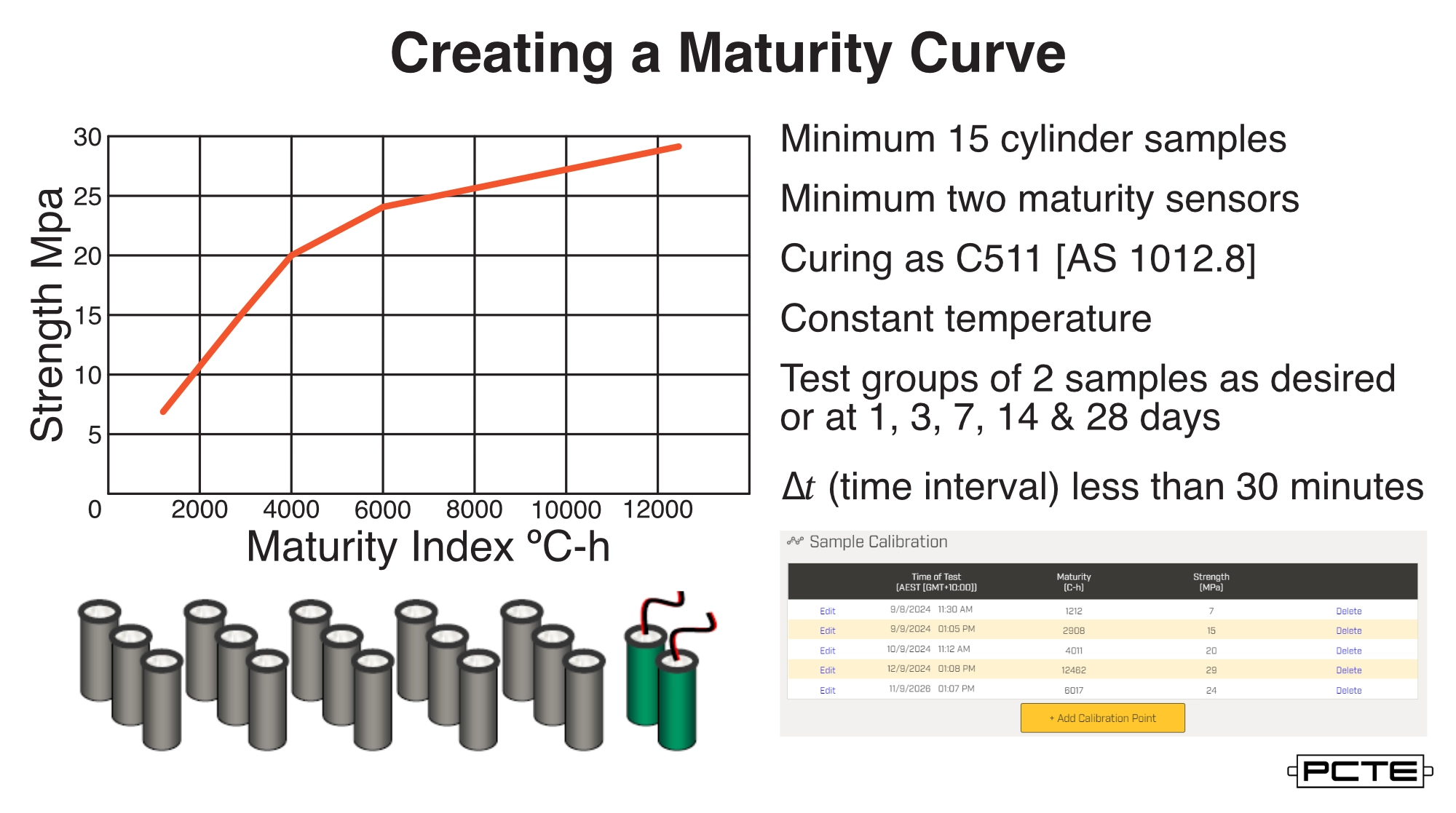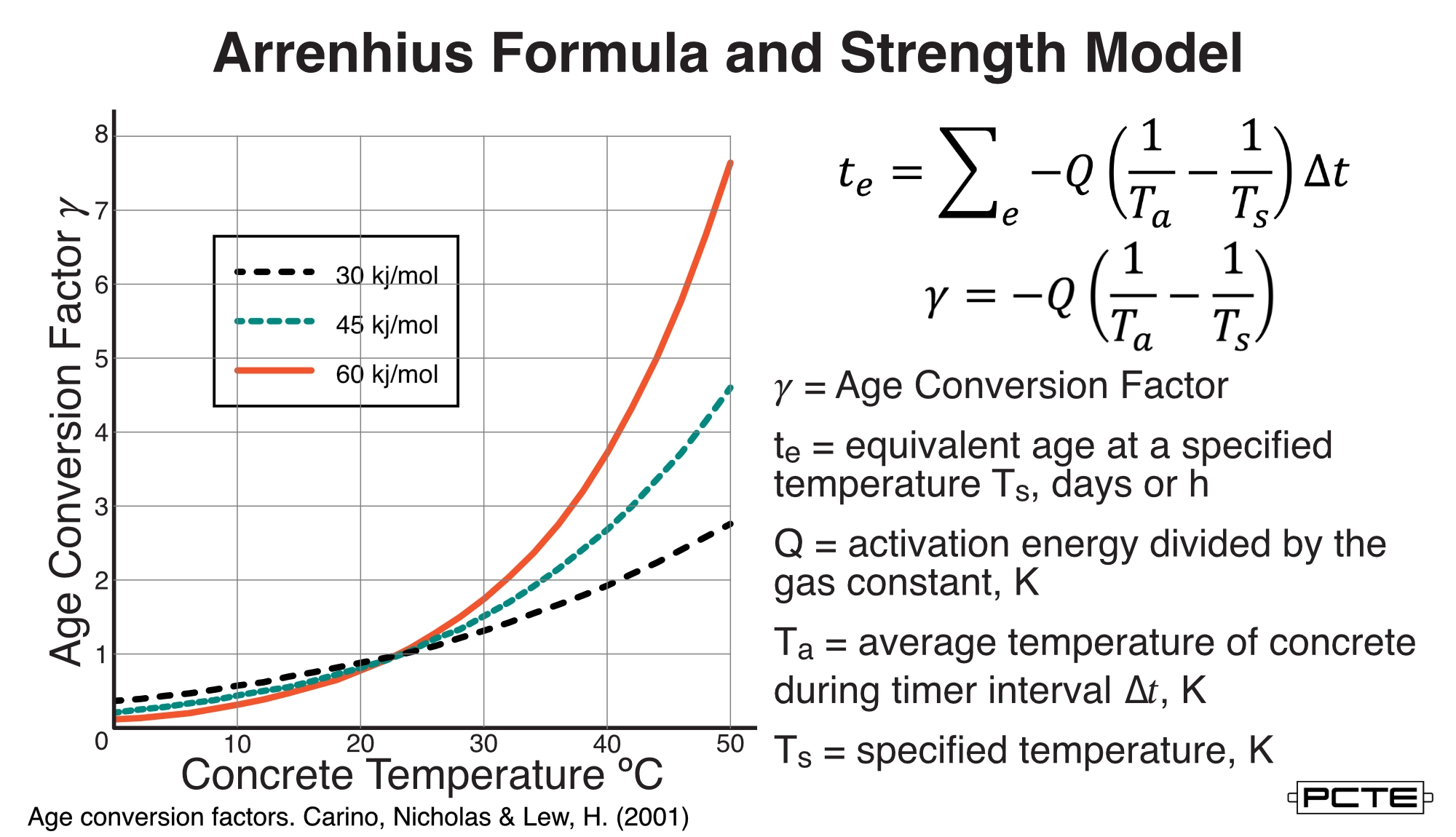Concrete maturity uses a relationship between the period of time a concrete element has been curing and the temperature of the concrete during that time to provide an immediate compressive strength value.
The relationship is specific to an individual mix design and created from a series of compressive cylinder break tests from a pool of samples that are cured with instrumented cylinders that track the same Temperature-Time relationship of all samples that are broken.
Concrete maturity is explicitly a measure of the early age strength development of concrete, to decide when scheduled construction stages that need sufficient strength may be actioned.
The maturity technique is not appropriate for evaluating final or in place strength after curing is complete.
The two most relevant Australian Standards are AS1012.8 and AS1012.9, which define the preparation of concrete cylinder moulds and their breaking in compression testing machines.
28 day strength is used a a measure of the performance of supplied concrete batches, ensuring the mix as delivered is appropriate to the mix design and application.
Early age strength is measuring the strength of the concrete TODAY, and is used to assist with decision making such as when to remove form work, lift precast elements, apply post tension or to allow traffic over fresh concrete.
The standards defining maturity is America's ASTM C 1074, which provides two methods to produce and use a Maturity Conversion Curve. Both require a set of sample cylinders to be broken at defined time periods.

The Nurse-Saul technique uses a temperature Time Factor, assuming a linear function of strength development, following the temperature during curing. A datum temperature defines a temperature point below which no strength gain occurs.

The equivalent age method aims to use an Arrenhius equation to take into account the activation energy of the concrete mix, allowing for a non-linear relationship that may better represent reality. It is especially suitable when the curing temperature of the concrete may have a broad range during early age strength development.

Where an alternative non-destructive early age strength is required Schmidt Hammer testing is commonly used in high throughput projects such as concrete precasting.
An other method that also aims to measure early age strength considering concrete temperature gain is Match Temperature Curing, where cylinder samples are cured in a heating bath that matches a measured temperature in the concrete element. A similar technique is to cure cylinder moulds in the same steam curing environment as a concrete element.
Maturity cannot replace 28 day strength which is universally measured with conventional cylinder breaks AS1012.